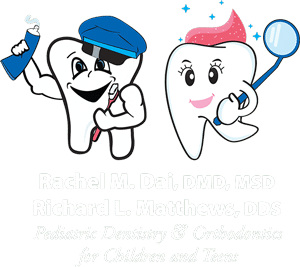The Buzz on Legacy Orthodontics
The Buzz on Legacy Orthodontics
Blog Article
The Ultimate Guide To Legacy Orthodontics
Table of Contents5 Simple Techniques For Legacy OrthodonticsSome Known Factual Statements About Legacy Orthodontics Some Known Details About Legacy Orthodontics Legacy Orthodontics for DummiesThe Best Guide To Legacy Orthodontics
At Advanced Orthodontics, we give patients with a alternative treatment experience. In enhancement, we offer adjustable treatment schedules, adaptable payment alternatives and an enjoyable, pleasurable experience. clear braces. Phone call ( 480) 357-4900 today to learn more and schedule an appointment.An orthodontist is a dental expert trained to diagnose, prevent, and treat teeth and jaw irregularities. They correct existing problems and are trained to determine problems that may create in the future. Orthodontists deal with individuals of any ages, from children to grownups. Individuals commonly link a best smile with good health.
Malocclusion, or misaligned teeth, can lead to oral issues, including dental caries, gum disease, and hard or excruciating chewing. However not everyone is born with straight teeth. If you have a bad bite or huge rooms in between your teeth, you might desire to consult a dental expert specializing in orthodontic care.
How Legacy Orthodontics can Save You Time, Stress, and Money.
( Image Credit Score: DigitalVision/Getty Images) Orthodontists use fixed and detachable oral gadgets, like braces, retainers, and bands, to change the setting of teeth in your mouth. Orthodontic therapy is for oral irregularities, consisting of: Uneven teethBite issues, like an overbite or an underbiteCrowded teeth or teeth that are as well much apartJaw misalignmentThe objective of orthodontic treatment is to boost your bite.
While you may assume of orthodontists as mostly for youngsters or teens that need dental braces, they can fix dental problems at any type of age. Orthodontists attend college, dental school, and orthodontic school.
All orthodontists are dental professionals, yet not all dentists are orthodontists. Orthodontic residency programs offer intensive, concentrated guideline for dental professionals. They concentrate on 2 areas: Exactly how to appropriately and safely move teeth Exactly how to effectively assist development in the teeth, jaw, and faceOnce an orthodontist has completed training, they have the choice to end up being board licensed.
An Unbiased View of Legacy Orthodontics
Malocclusion leads to tooth congestion, an askew jaw, or uneven bite patterns. Malocclusion is usually treated with: Your orthodontist affixes steel, ceramic, or plastic square bonds to your teeth.
Some individuals require a headgear to aid move teeth right into line with stress from outside the mouth. A retainer is a personalized tool that maintains your teeth in place.
They're usually used on kids. They can produce added area in the mouth without having to draw teeth. If you have a serious underbite or overbite, you might need orthognathic surgical treatment (also called orthodontic surgical procedure) to lengthen or reduce your jaw. Orthodontists make use of cords, medical screws, or plates to sustain your jaw bone.
You may require to see an orthodontist if you have: Crowding or not enough room for all of your teethOverbite, when your upper teeth come by your base teethUnderbite, when your bottom teeth are too much forwardSpacing or problems with gapsCrossbite, which is when your upper teeth fit behind your bottom teeth when your mouth is closedOpen bite or a vertical gap in between your front bottom and top teethMisplaced midline, when the center of your bottom and top teeth don't align Fixing an oral malocclusion can: Make biting, chewing, and speaking easierImprove the symmetry of our face and your general appearanceEase pain from temporomandibular joint problemsSeparate your teeth and make them simpler to cleanse, aiding prevent dental cavity or dental caries It's usually a dentist who first notifications misaligned teeth during a regular exam.
Unknown Facts About Legacy Orthodontics

During your initial orthodontic examination, you'll likely have: An oral examPhotos taken of your face and smileDental X-raysPanoramic (360 level) X-rays of your face and headImpressions to develop molds of your teethThese tests will aid your orthodontist understand how to wage your therapy. invisalign. An orthodontist is a dental expert who's had training to treat your teeth and jaw
Orthodontists might execute surgery, exams,X-rays,and more to help you acquire an extra comfortable, healthier smile. An orthodontist is concentrated on your bite, so something like a damaged tooth would be managed by a dental professional. Orthodontists are dentists however not all dentists are orthodontists. Orthodontists are concentrated on your bite, or the method your teeth meshed, and the straightness of your teeth.
Ever questioned how celebrities always seem to have perfectly lined up teeth? The answer commonly hinges on the competent hands of an orthodontist. Yet what specifically does an orthodontist do? Orthodontists are oral experts who concentrate on fixing irregularities in the teeth and jaws. Their proficiency exceeds just producing a lovely smile; it encompasses enhancing your general dental health and wellness and function.
Indicators on Legacy Orthodontics You Should Know

, orthodontists have a varied toolkit at their disposal. These reliable dental braces use a system of braces bonded to the teeth and connected by cords.
These removable trays are personalized to progressively shift the teeth's position. In situations of slim jaws, palatal expanders can be utilized to develop space for appropriate tooth placement.
Report this page